Examining the Google Mini
The Mini itself is actually your run-of-the-mill 1U server, with the chassis painted blue.

The front of the machine features both the front mounting hardware as well as an exposed grill for ventilation.

Click to enlarge.
Although it is tough to see from the picture below, behind the grill is a fully functional CD-ROM drive that you can’t (and aren’t meant to) access without taking apart the machine:
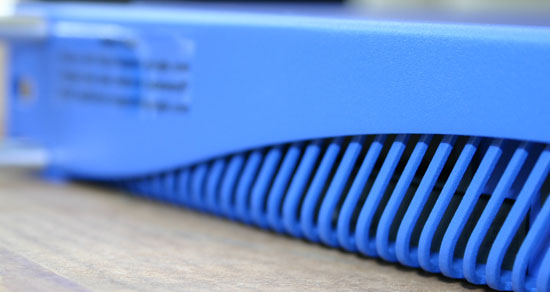
Behind this grill is a slim-line CD-ROM drive, not meant to be used by the user.
Looking at the rear of the machine, you get a better indication of what the Google Mini actually is (hardware-wise):

You see two PS/2 ports (keyboard/mouse), two USB ports, a parallel port, a serial port, VGA output, two Ethernet ports (color-coded to match the cables) and a single slot cover.

The two Ethernet ports are color-coded to match the cables provided with the Google Mini.
Getting Inside the Mini
It’s very clear that Google doesn’t want you playing around with the innards of the Mini as most of the screws have no usable head:

The grey screw above the rightmost Ethernet port features no usable head. Luckily, removing the screw only requires a little patience and some pliers.

The screw is threaded - it just can’t be undone with a regular screwdriver.
The mounting brackets are attached to the Mini using regular screws, so those can be installed/removed without any trouble. Once you get the screws off of the back of the Mini, there’s one last step to getting inside the unit.
The top of the Mini is actually one large piece of plastic with adhesive on its back that not only makes the unit look better, but also acts as another safeguard against curious users gaining access to the internals of the machine. Peeling back the front edge of the top breaks the adhesive and allows us to slide off the front cover.
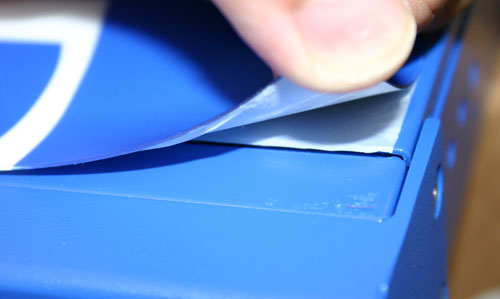
With the cover off, the internals of the Mini are no different than your standard 1U server. There are three drive bays and a large shroud channeling air to the processors underneath.
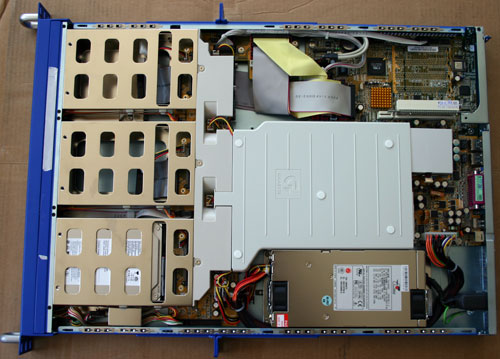
Click to enlarge.
A closer look at the fan shroud tells us the original manufacturer of the server, Gigabyte:
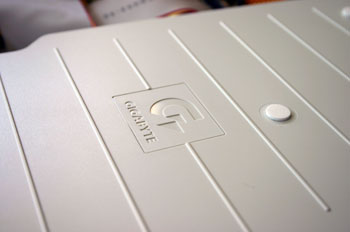
Removing the shroud reveals a pair of processors and the rest of the motherboard. The motherboard, like the server, is manufactured by Gigabyte:

The CPU heatsinks themselves also carry the Gigabyte brand:
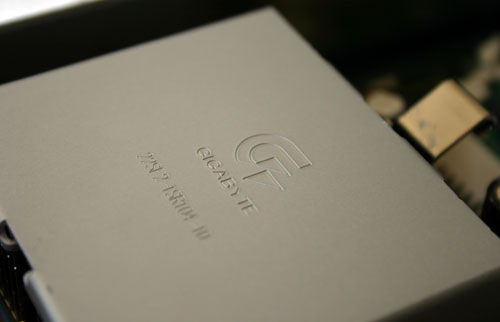
The heatsinks have no fans on them. Instead, they rely on the chassis fans and the fan shroud to remove heat from them.
We were curious to see what was under those heatsinks, so of course, we pulled one off:
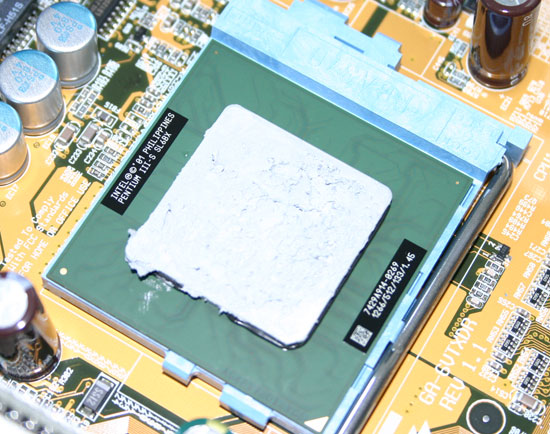
The Google Mini uses a pair of Pentium III-S processors running at 1.26GHz. It’s been a while since we’ve seen these used in a server, but they are most likely more than enough for the job at hand.
The motherboard features a VIA chipset, as is evident by the VIA South Bridge pictured below:
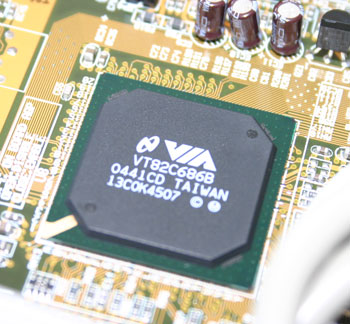
All of the drive bays in the server feature PATA interfaces and are handled directly by a Promise IDE RAID controller:
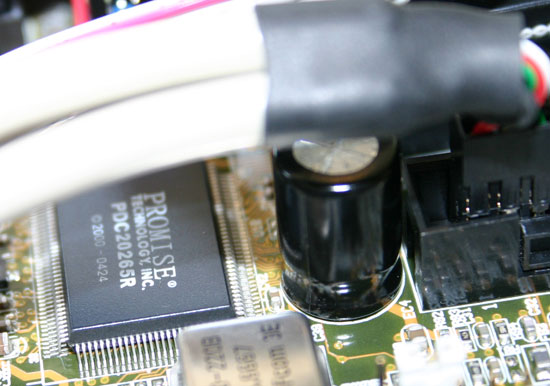
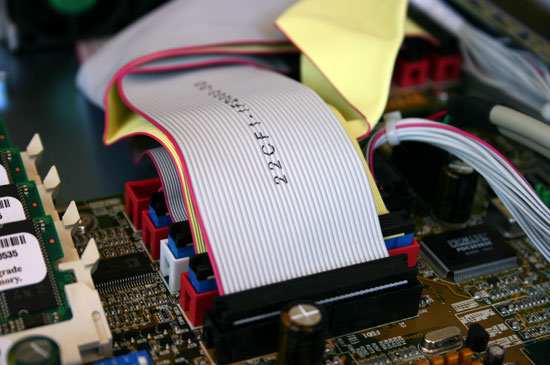
The system shipped with a single hard drive, a 120GB Seagate Barracuda 7200.7.
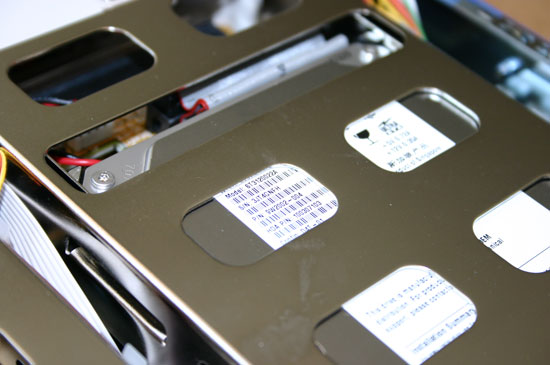
The Google Mini ships with 2GB of PC133 SDRAM (4 x 512MB sticks); interestingly enough, the memory uses Micron chips and is labeled as Dell memory.

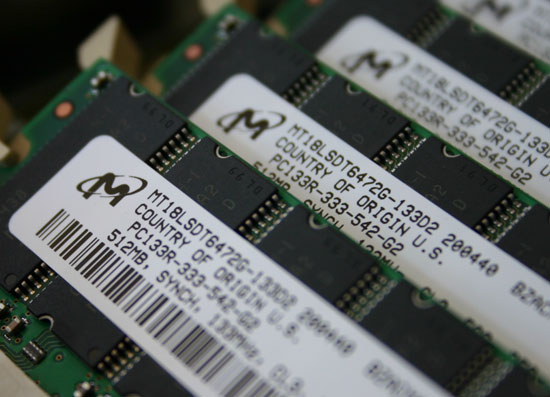
Powering the system up reveals a normal AMI BIOS, but of course, entering the BIOS is password protected - and you’re not given the password.
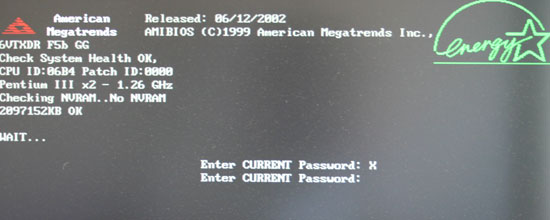






























48 Comments
View All Comments
Calin - Tuesday, September 6, 2005 - link
Pentium III processors are still offered in those 1U servers. The reason would be (probably) cheap price for good performance and lower thermal load than any other competitive Intel processors.Low thermal load helps a lot for dual processors servers.
flatblastard - Tuesday, September 6, 2005 - link
Not only a p3 mobo, but PC133 ram labeled for DELL!?!? I guess Google is buying up all the old junk and putting it to good use.bhtooefr - Tuesday, September 6, 2005 - link
Heck, I've got a Dell PowerEdge 350 (1U, single 850 P3, i440BX chipset) sitting in front of me, and the RAM's not even labelled Dell...flatblastard - Tuesday, September 6, 2005 - link
making a fortune in the process....brownba - Tuesday, September 6, 2005 - link
Ok, so I tested it with this query:google mini search server
- it came back with 18700 useless results.
I also tried the title of the article:
anandtech search goes google
- 712 useless results
how long does it take to crawl?
glennpratt - Tuesday, September 6, 2005 - link
I'm guessing jason clark meant to reply to you.Rock Hydra - Tuesday, September 6, 2005 - link
I like it. I tested it out and got the returns I was expecting. Very Google-y style. Now if they implemented something this well into the forums search....maybe another day.TheInvincibleMustard - Tuesday, September 6, 2005 - link
So, naturally, I searched for iram ... returned zero results, but it did suggest i-ram as a possibility. So I clicked that link ...doh ... "I" is a very common word and so was not included in my search, meaning all I actually wound up searching for is "RAM" (of which there was several thousand entires, and not one of the top few was actually about the I-RAM product), so perhaps a bit more tweaking is in order ;-)
Granted, though, the search did only take 0.02 seconds! :-D
dvinnen - Tuesday, September 6, 2005 - link
I was playing around with it to. Did the i-ram search also, the first artical presented was an artical from 1997 about memory terms (think EDO). The actuall i-ram artical was actually the forth result presented. Hell, just a google search gives it as the 4th link in all the internets. Defently could use some tweaking (give added weight based on the date of the artical?) but looks to be a step up from the useless one built into SQL server you were useing.glennpratt - Tuesday, September 6, 2005 - link
Did you read my post?Did you click on the link that says 'i is a common word and was excluded' in the search? That would have given you a couple of choices on what to do to fix it.